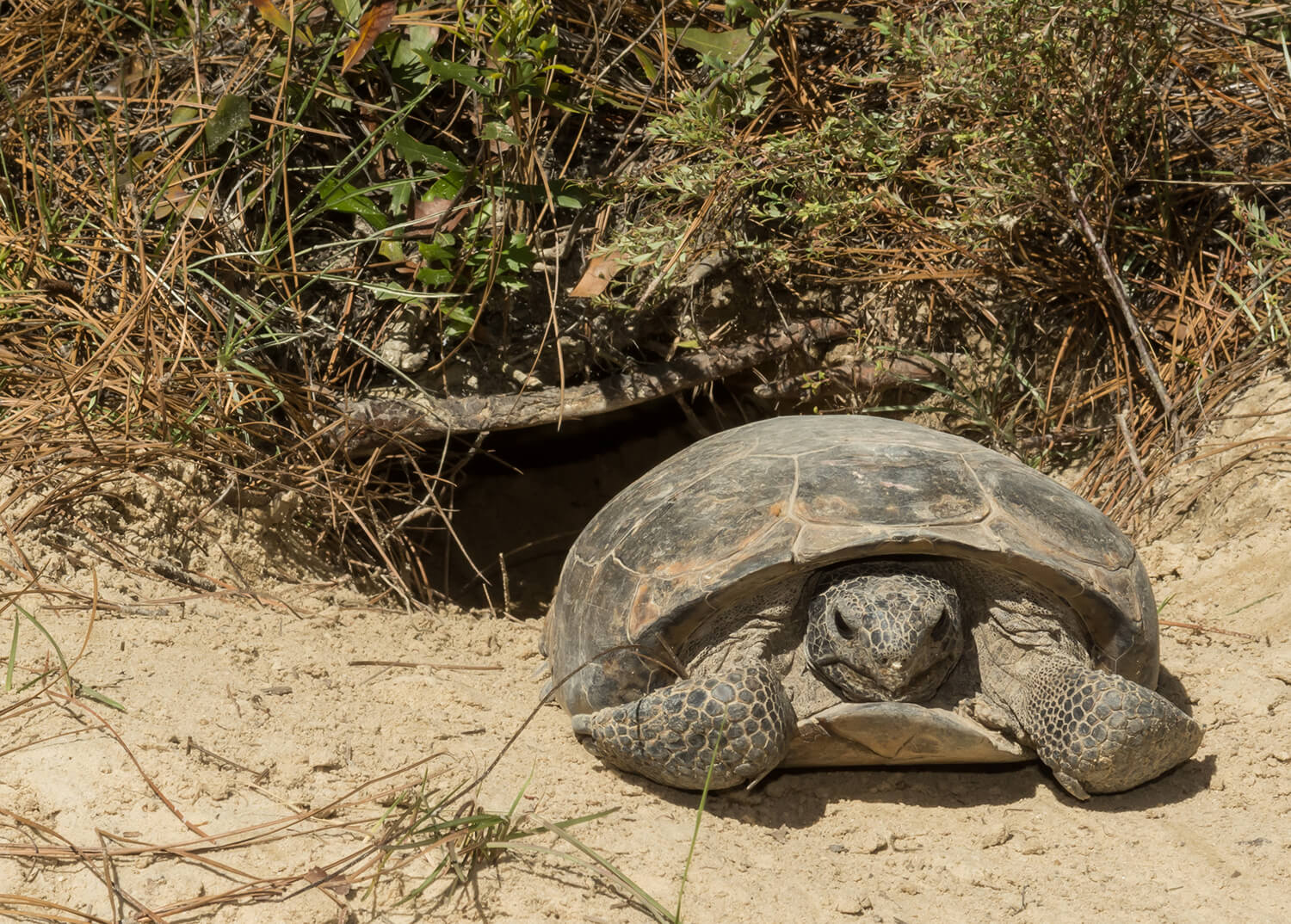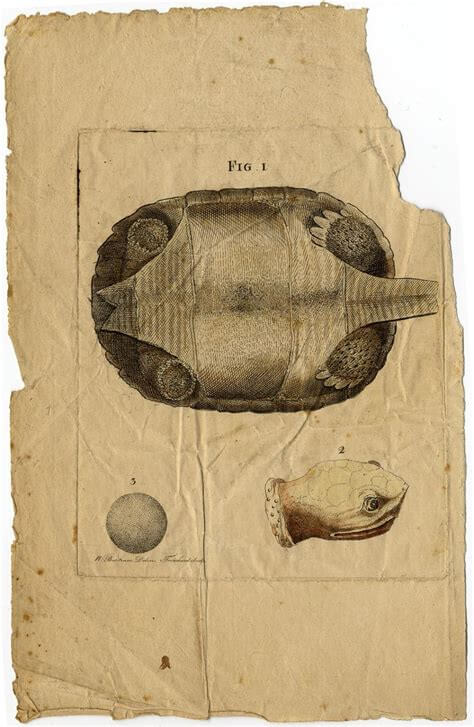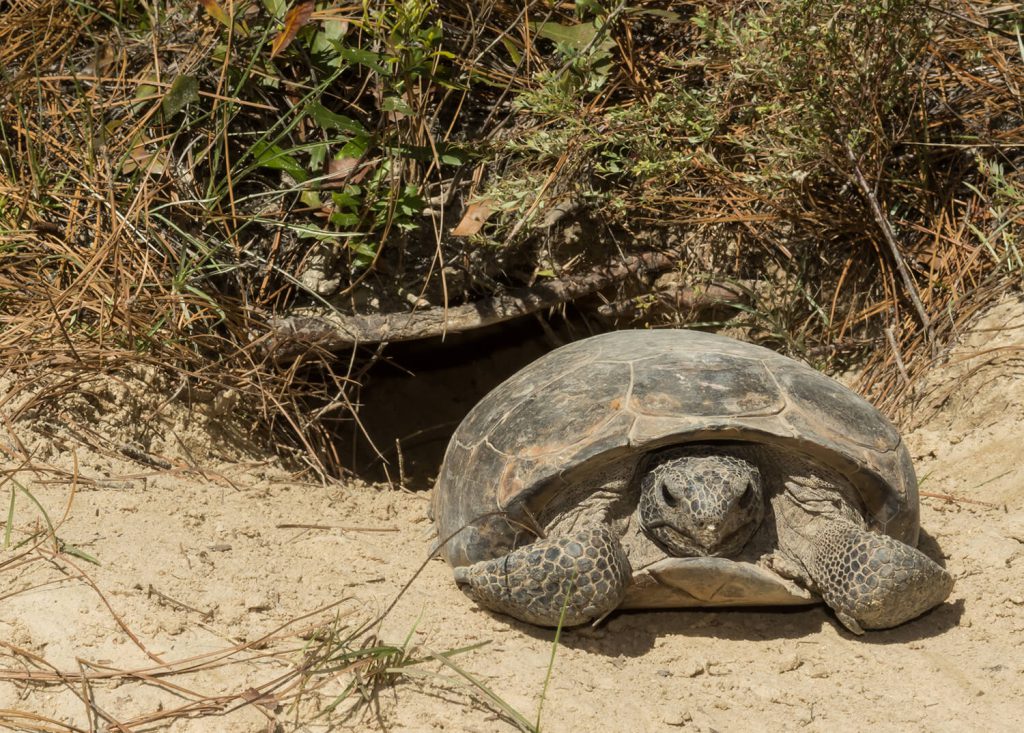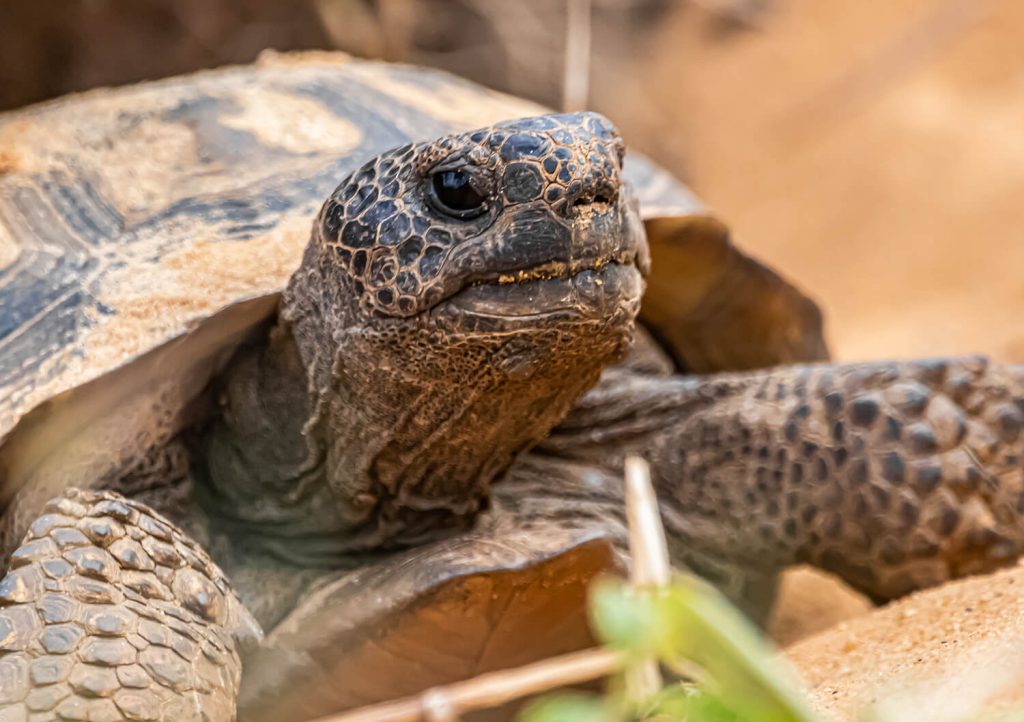Gopher Tortoise

The Great Land Tortoise, called Gopher
Gopher Tortoise
GOPHER TORTOISE, Gopherus polyphemus Daudin Family TESTUDINIDAE (Tortoise Family)
“Observed as we passed over the sand hills, the dens of the great land tortoise, called gopher: this strange creature remains yet undescribed by historians and travelers. The first signs of this animal’s existence, as we travel Southerly, are immediately after we cross the Savanna River. It is to be seen only on the high dry sand hills.”
Bartram reported the “great land tortoise” also along his route to the Alachua Savanna between Lockloosa Creek and the River of Styx. He proposed the name “Testudo polyphaemus” for this turtle, based on his observations from this sand hill area.
Tortoises are a specialized group of turtles that are specialized to living on land, not in the water, like most other turtles.
The gopher tortoise occurs in sandy habitats throughout most of Florida, southern Georgia, extreme southeastern South Carolina, southern Alabama and Mississippi, and eastern Louisiana. Gopher tortoises are declining throughout their range and have been listed as a protected species in Florida and elsewhere.
Gopher tortoises are widespread in the sandy parts of Putnam County, with their distinctive burrows obvious in open sandy habitats and pastures.
Digging Extensive Dens
Gopher tortoises are adept burrowers, producing tube-like dens more than 15 feet in length. It uses its spade-like front legs to dig its burrow and its body movements to push the soil to the surface, where it accumulates as sandy mound, called the apron, at the entrance. The den is a single tube, but wide enough for the tortoise to turn around anywhere along the burrow’s length.
Gopher tortoises have been called a keystone species because of its burrowing behavior. Excavating tortoises bring deeply buried soils to the surface, as part of nature’s way of recycling nutrients. They also aerate the soil as they move the soil.
The burrows themselves also provide homes for more than 350 species of other animals, including groups of arthropods that are found no other place in the environment. These underground retreats serve as shelters from frequent fires, extremes in temperature and humidity, and predators.
The Florida (or gopher) mouse and gopher frog have a very close association with the gopher’s burrow. They live in the burrow, often in modified side tunnels and alcoves, which seem to meet their creature comforts. The mouse lives in family groups, including several generations, reproduce, and emerge at night to feed on nearby sandhill flowers, fruits, and seeds. They dig separate exit burrows to the surface from inside the tortoise burrow, probably as an escape hatch from would-be snake predators. Gopher frogs forage on insects and spiders in the surrounding habitat, returning in the morning as temperatures climb and the humidity lessen. They leave the burrows during rainy bouts in late winter and spring and travel often upwards of a mile to isolated sandhill ponds to breed. Their loud snores at night alert frog enthusiasts that they have arrived.
GOPHER TORTOISES AS KEYSTONE SPECIES: The act of burrowing and providing homes for the multitudes of other animals make the tortoise an essential, therefore keystone, member of the sand hill environment. Lose the gopher tortoise and we can lose all of the other elements that live in association with the tortoise too.
Tortoise Behavior
Bartram commented that this land tortoise has the remarkable ability to carry a “man standing on its back.” Well, yes to a point, the shell can support the weight of a small adult person, but the tortoise seems to refuse to “carry” the person or for that matter to make any movements at all other than blinking its eyes.
Gopher tortoises are vegetarians, consuming leaves, tender stems, flowers, and fruits of more than 200 different species of sandhill plants. They probably are important in the dispersal on seeds of sandhill plants.
One to 8 eggs are often laid in the apron mound. Egg shells are round, about 2 inches in diameter. The eggs take about 110 days to hatch, with hatchlings about two inches in length. The sex of a tortoise is determined by the temperature of the soil at the nest site, with warmer nests producing more females, cooler nests, more males.


